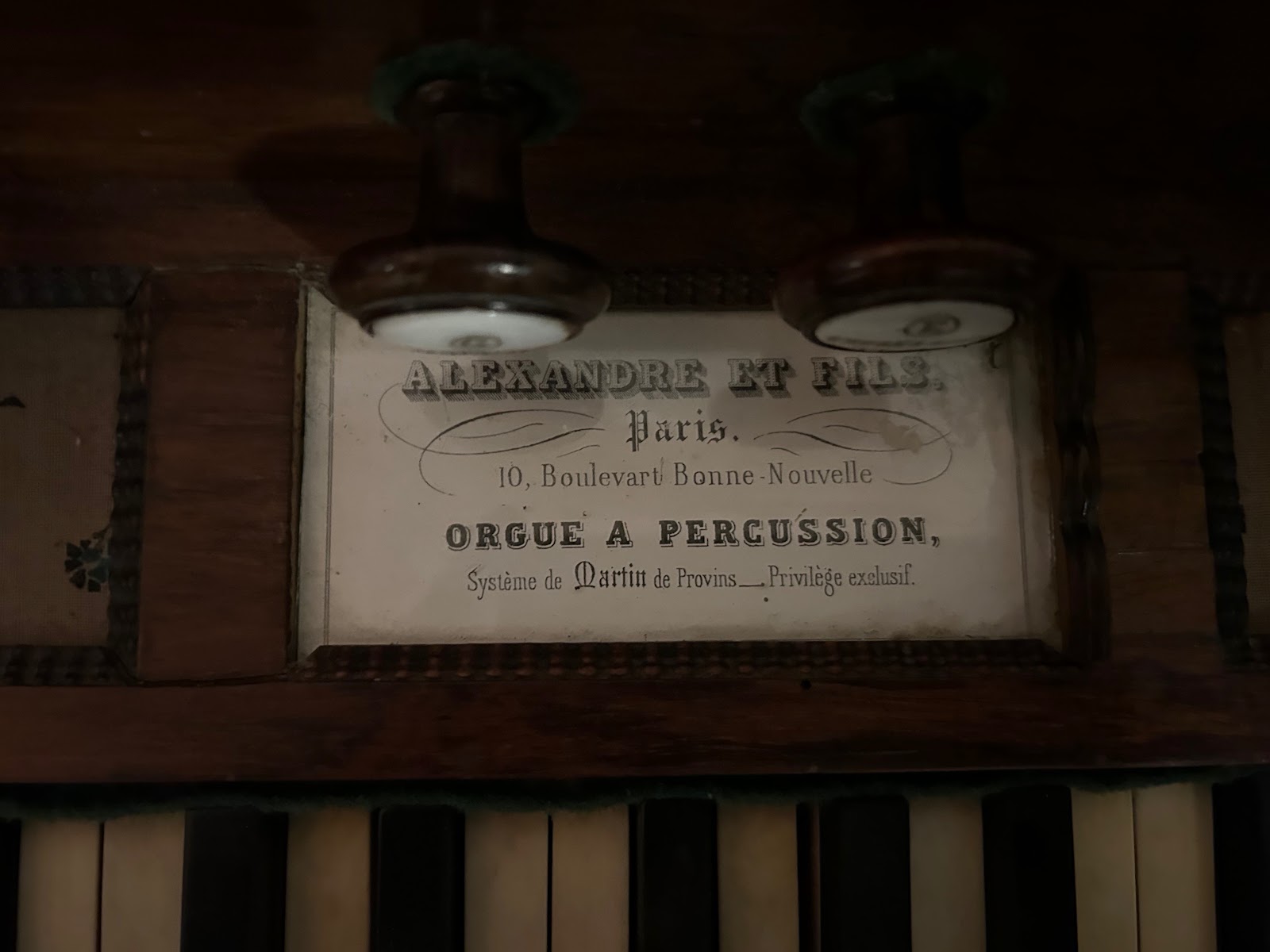
The organ was made by a firm named Alexandre & Fils (Son) in Paris, France. From the specifications of the instrument and the address on the label I have dated it to a very tight window from 1846-48, which is pretty good for something that old.
The harmonium was developed only a few years previous to when this instrument was made by Alexandre Debain, also of Paris. Jakob Alexandre, a Jewish manufacturer of accordions since 1829, decided to try making a similar instrument. Since Debain had patented the term “harmonium” Alexandre called his instrument an “orgue melodium.” It was very similar to Debain’s harmonium and the two companies competed for the market they had created, while other makers introduced similar instruments. Alexandre bought the rights to the percussion action in 1846 (which is the oldest date my instrument can date from because it has an early percussion action) and invented the expression feature.
The percussion action is a miniature hammer action similar to what might be found on a very early piano. It was designed to quickly activate one set of reeds by gently striking the reed that was played so that it sounded quickly. This became a very desirable feature on later harmoniums. The expression feature cut off the reservoir and the player pumped air directly into the chest, allowing for quick changes in expression or volume. This also became an essential feature of all subsequent harmoniums.
Alexandre moved their showroom several times, making the dating of an instrument fairly easy within a decade or so. Mine shows the earliest address from which they moved about 1850.
This harmonium is a remarkable survivor from a turbulent time in French history. It was made just before the revolution of 1848 that toppled the Citizen King, Louis Philippe, and led to the reign of Emperor Napoleon III. The July Monarchy, so called because it came about in July, 1830, was plagued with periodic insurrections, and assassination attempts against the King. Constant underground seditious activity made Paris a boiling stew of unrest. The time when my harmonium was made was anything but a time of tranquility.
My harmonium is also a living testament to the process of colonization that was sweeping across much of the world. The materials in the organ testify to this. The case is covered in a veneer of Brazilian Rosewood. The keys are made from African elephant ivory. The accidentals (black keys) are made from African ebony. Much of the other woods used (spruce, pine, maple, European beech, possibly cherry) are woods native to Europe and thus carry no colonial baggage.
It is a humbling thing to work on such an instrument that is laden with history both troublesome and dramatic.
In this series of posts I will describe the process of restoration of this instrument, including the challenges and pitfalls. I hope you’ll join me on this journey!

No comments:
Post a Comment